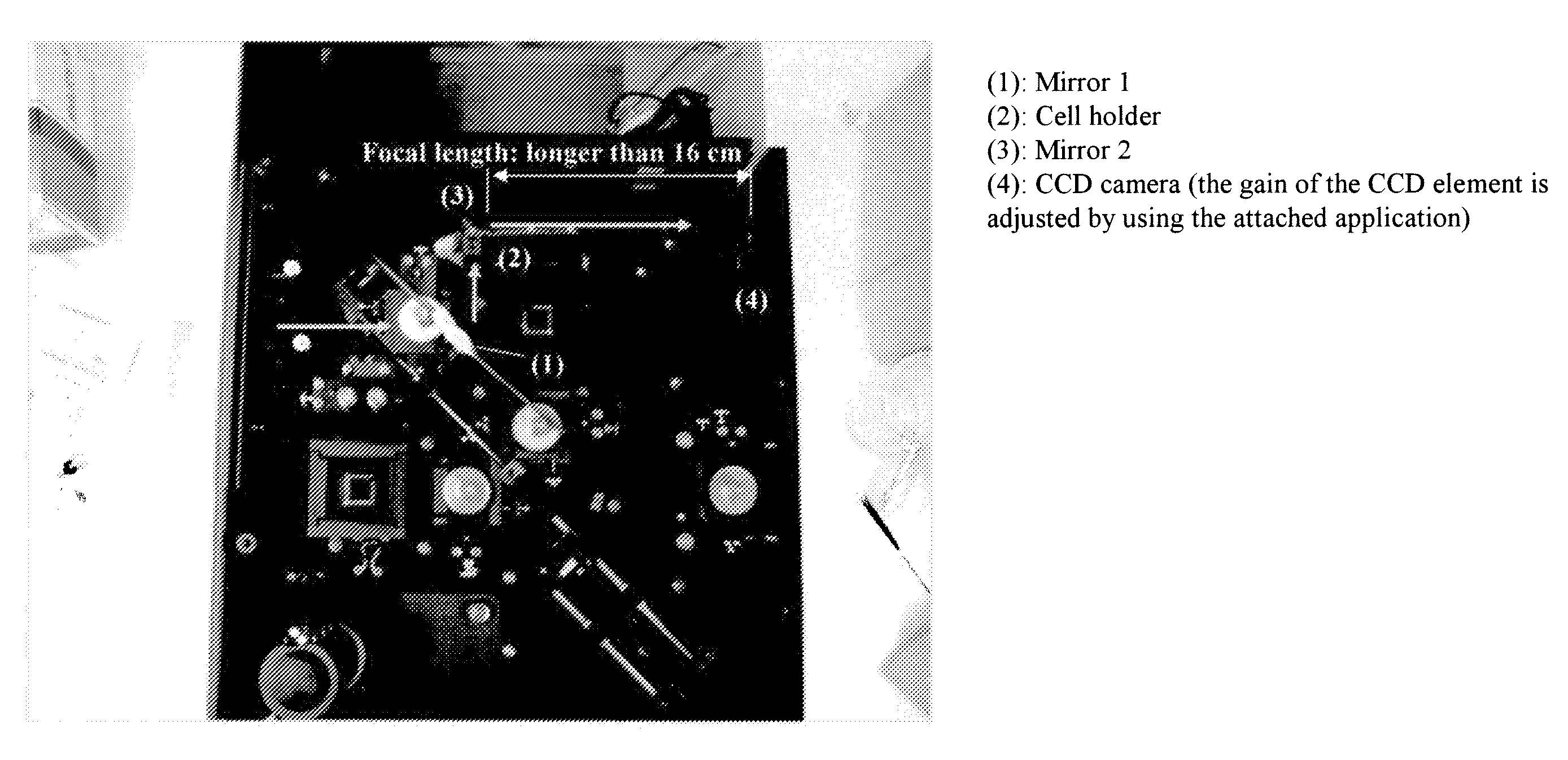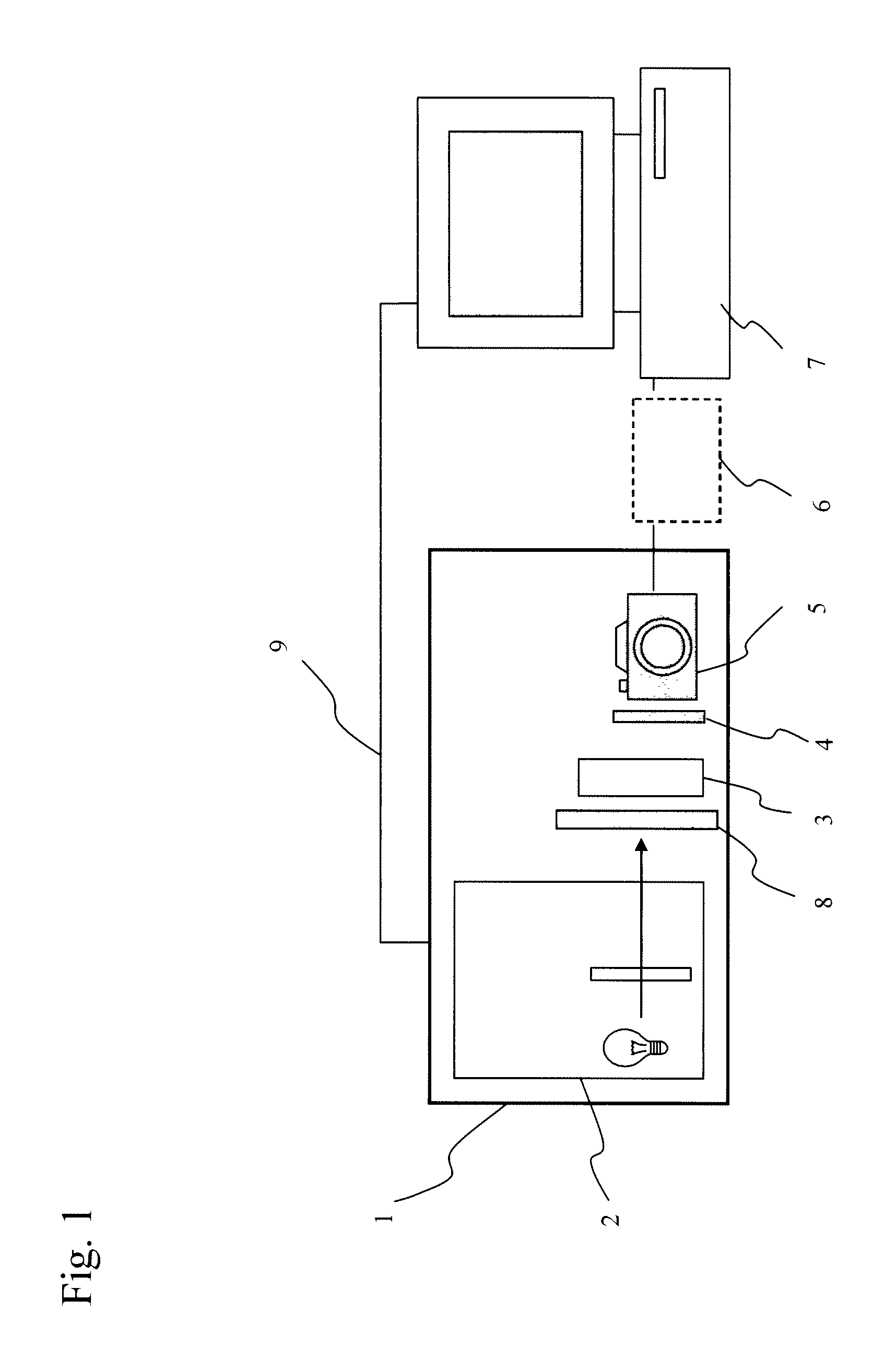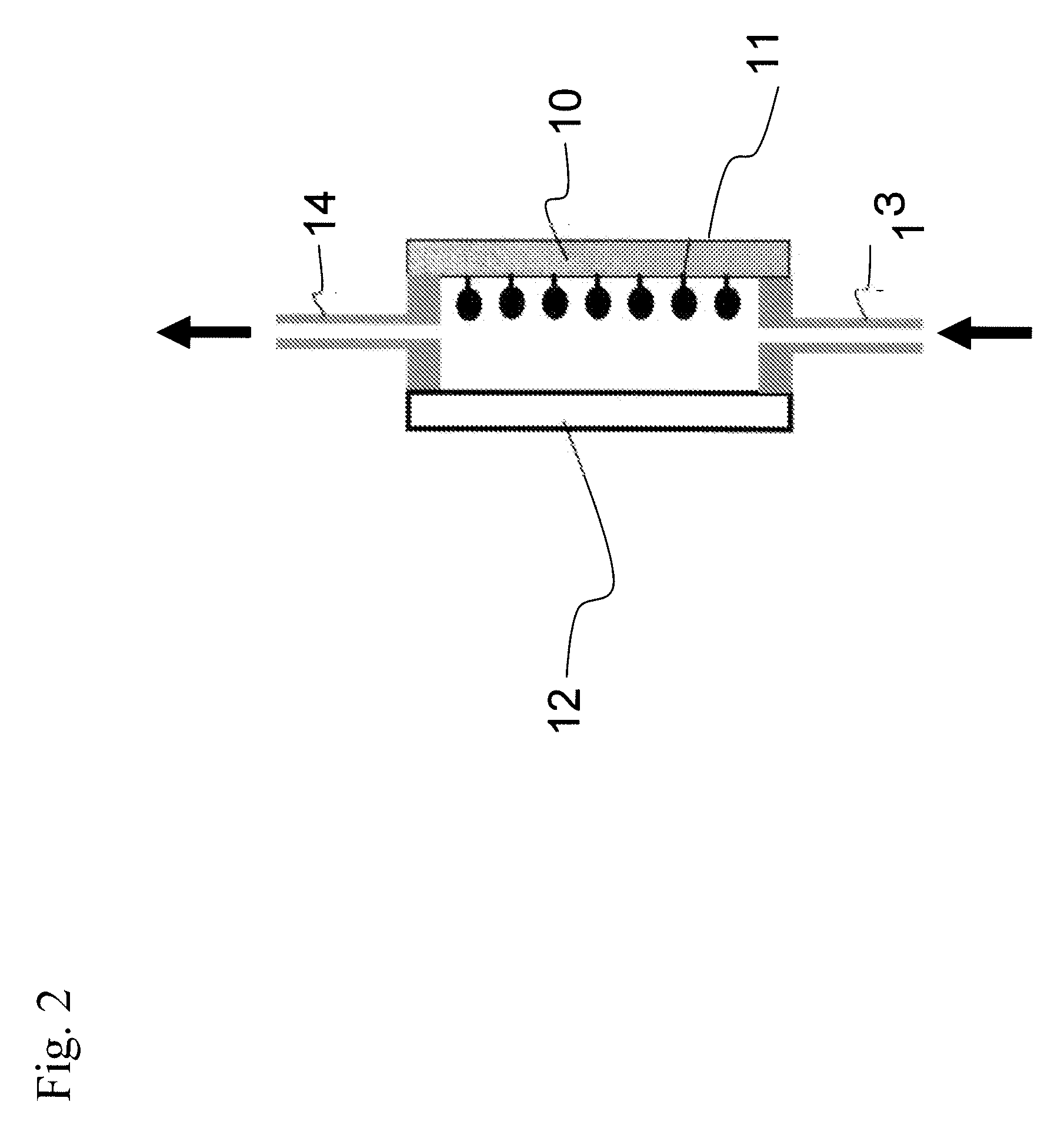Detection And Analysis System For Protein Array
a protein array and analysis system technology, applied in the field of detection and analysis system for protein arrays, can solve the problems of inability to easily construct a system using such a photodetector, and the cost of two-dimensional photodetectors which can detect ultraviolet light is extremely high, so as to achieve the effect of inexpensive and readily available, inexpensive and readily availabl
- Summary
- Abstract
- Description
- Claims
- Application Information
AI Technical Summary
Benefits of technology
Problems solved by technology
Method used
Image
Examples
examples
[0075]The present invention will be specifically described with reference to the following examples, but the present invention is not limited by these examples.
[0076]In this example, a base material for a protein array was prepared by forming a thin sheet of a polyacrylamide gel containing a polymer having an amino group on a surface of quartz glass. Since this base material substantially did not absorb light in the wavelength range of visible light and ultraviolet light (transparent), the optical activity of a protein present in the gel was able to be directly detected. In other words, an immobilized protein and a protein which interacted with the immobilized protein were able to be detected / analyzed by an optical method, without a specific labeling process.
[0077]In this example, a green fluorescent protein (SEQ ID No:1) and dihydrofolate reductase (SEQ ID NO:4) were immobilized on this base material for a protein array. Since the green fluorescent protein was green under natural l...
PUM
 Login to View More
Login to View More Abstract
Description
Claims
Application Information
 Login to View More
Login to View More - R&D
- Intellectual Property
- Life Sciences
- Materials
- Tech Scout
- Unparalleled Data Quality
- Higher Quality Content
- 60% Fewer Hallucinations
Browse by: Latest US Patents, China's latest patents, Technical Efficacy Thesaurus, Application Domain, Technology Topic, Popular Technical Reports.
© 2025 PatSnap. All rights reserved.Legal|Privacy policy|Modern Slavery Act Transparency Statement|Sitemap|About US| Contact US: help@patsnap.com



